Shielded Custom Wire Harness for EMI-Sensitive Electronics
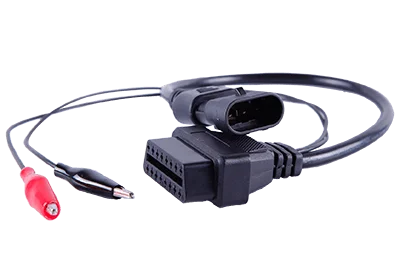
For the smooth and best use of EMI-sensitive electronics use shielded custom wire harnesses. These harnesses are made to accurately fit with the electronics that are very sensitive. For the exact data transfer and high power supply use these harnesses to always have the best outcome. You can use them for various sectors. The outer shield attached with the harness keeps the harness and wire core safe and they last for many times. Why Shielding is Key for Custom Wire Harness Shielding is like a cover that wraps around the wires. This cover blocks outside noise and keeps the signal inside strong and clean. It ensures signals stay steady from the start of the cable to the end. Even a small bit of noise can cause errors, freezes, or shutdowns in smart devices. Because of this, custom wire harness assembly services often use foil, braid, or both to strengthen the protection. This lowers EMI and makes the whole system run without any trouble. Shielding also helps when wires are close together, so their signals do not mix. This is very useful when a tight space and cables are packed side by side. Our Best Custom Wire Harness Flat Ribbon cable for Simple Layouts A flat ribbon cable is thin, light, and very neat. It is a good choice for places where space is small and the design needs to be tidy. This type of cable keeps signals in a straight line, so they do not cross or mix with each other. That makes them safe and clear for boards, printers, and control devices. Many custom cable and wire harnesses use ribbon cables because they bend easily, lie flat, and connect without much work. They also save a lot of space and give the inside of a device a clean, simple...
Read More »Purchase Custom Wire Harness for Top-Grade Quality
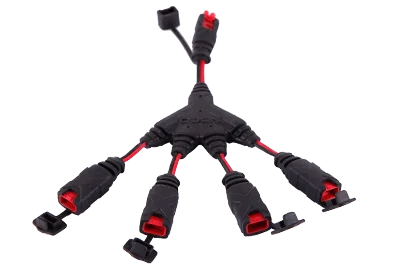
A custom wire harness is a smart way to keep cars safe, smooth, and strong for a long time. Each harness is built with care, tested with skill, and made with strong parts that pass strict checks. They are built to match car needs and give safe links that keep power flow steady. With custom harnesses, cars run with no loose wires, power loss, or breaks. They provide peace of mind to drivers, save time, and cut repair costs. They are simple to install, easy to use, and work well with any car. They are built to last many years and give safe rides every time. These harnesses help cars work better, last longer, and stay safe on all roads. Why Use a Custom Wire Harness When you need safe, strong, and simple cables for school, home, or work, a custom wire harness assembly is the best choice. It keeps all wires neat and easy to use. It also makes them last longer and stay safe. With custom wire harness manufacturing, each wire and part is shaped to fit your own needs. This saves time, lowers risk, and helps your tools work much better. A harness also makes your project look neat, pro, and clean. Suppose you want custom cable and wire harnesses. In that case, you can order ones that fit cars, machines, medical tools, robots, or even smart home devices. A harness is like a strong shield that holds all wires together to work as one safe unit. Top-Grade Quality Custom Wire Harnesses Custom XLR cable A Custom XLR cable is one of the most used cables for music and sound. It makes a clear sound and cuts out bad noise. People use it for concerts, music studios, live shows, and even at home. With china custom wire...
Read More »Automotive Wire Harnesses for High-Performance Vehicle Systems
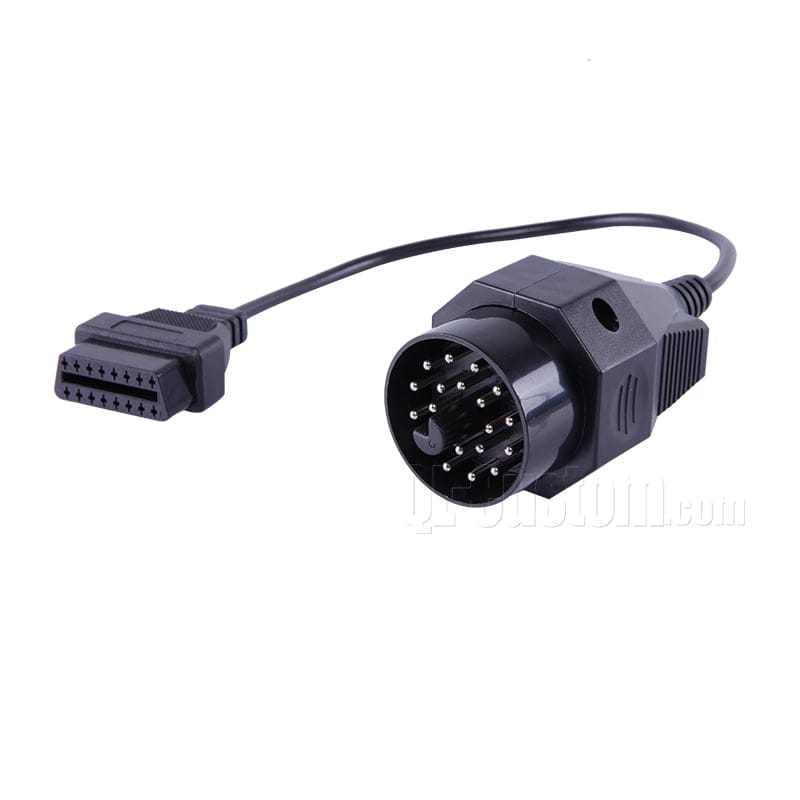
High-performance automotive wire harnesses are made for top-grade vehicles. These harnesses connect the car parts to supply power and signals precisely. These wires are especially made to handle the heavy loads and heats. For tough and harsh conditions these harnesses are specially designed. Premium quality harnesses always keep the vehicle system in good condition. These harnesses are used in many sectors. For the smoothest performances use these harnesses. Cost Per Unit: Planning Smart The automotive wire harness cost per unit is key when building cars or trucks. The price changes by wire size, type, insulation, and number of plugs. Small and simple harnesses cost less, while large and heavy ones cost more. Buying many units simultaneously lowers the cost per piece and saves money. This is smart for shops or makers. Knowing the unit cost helps in planning budgets and making smart picks. It helps keep a balance between safe parts and a fair price. With clear cost plans, makers can build safe but not too costly cars. Available Custom Assembly Services Shops can now use automotive wire harness assembly services to save time and simplify work. These services cut wires, crimp ends, wrap them with tape, and test each piece before shipping. The harness comes ready to use right away. This helps when cars need high trust and no mistakes. Shops that use custom services do not fear wrong sizes or weak plugs. Each plug, each wrap, and each cover is tested for safety. This lowers mistakes, saves work time, and builds smoothly. OEM vs Aftermarket Harness Choosing OEM vs aftermarket automotive wire harness is a large call for car owners. OEM harness is made by the car maker, so it fits perfectly, but may cost more. Aftermarket harness is made by other makers. It is often cheaper and...
Read More »Automotive Wire Harnesses with Precision OBD Custom Cable

Automotive wire harnesses with precision OBD custom cable help cars run safely, strongly, and smoothly daily. These wires link all car parts to share power with no waste, block, or loss. They are made with good parts that fit right, last long, and do not cause significant or small trouble. Each harness is checked, tested, and proven to give safe use, steady power, and long life. They are simple to install, easy to handle, and give drivers complete trust and peace of mind. The strong design makes them the best choice for large or small, old or new cars. They help cars stay in good shape, make all parts work better, and give safe, calm, and smooth rides every time. Innovative Design for Modern Vehicles Automotive wire harnesses move power and data safely inside a car every day. When makers follow automotive wire harness design guidelines, each wire stays neat and safe in its place. This stops noise, heat damage, and wear, and keeps the car system clean and clear. A well-built automotive wire harness assembly makes car parts work smoothly and steadily all the time and in any weather, city, or country. It also makes repairs faster, easier, and cheaper for users and shops. Careful design means less danger, more trust, and longer life for every wire, clip, and wrap with less waste. Get High Quality Supply Each Time A high quality automotive wire harness supplier gives strong, neat, clean parts for cars, buses, trucks, and electric vehicles. Automotive wire harness suppliers like QL-Custom Technology Ltd. make parts that last many years even under heat, dirt, shake, and heavy use. They offer many automotive wire harness connectors that fit many car models, hold tight, and click in safely. They also give automotive wire harness repair kits so you can...
Read More »Automotive Wire Harnesses for Smart Car Electronics
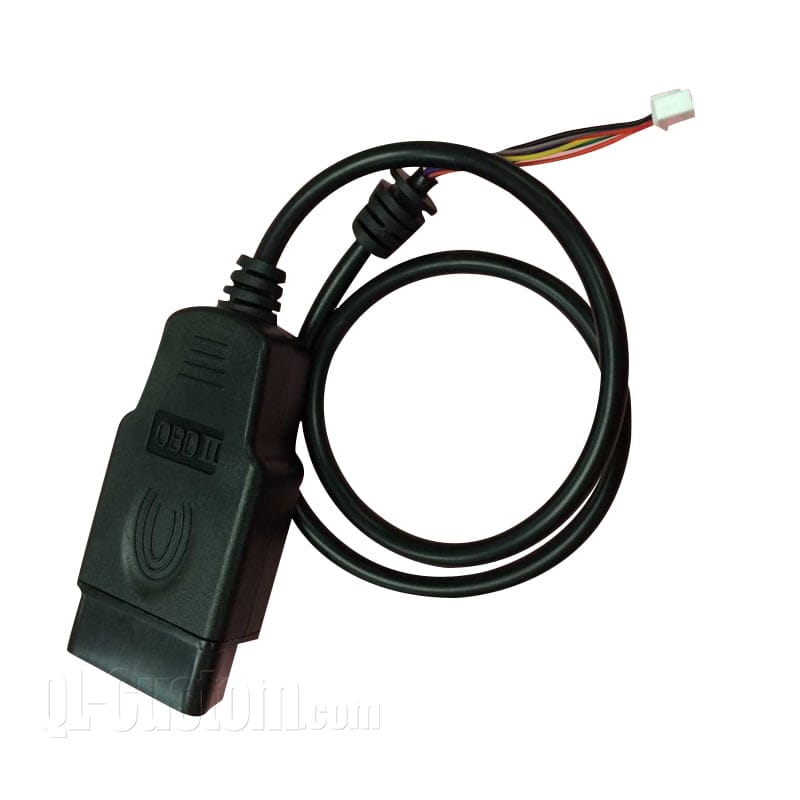
Smart cars use many small parts that all need wires. Without wires, none of the smart parts can work. Automotive wire harnesses keep all cables in one safe, neat, clean bundle. They move power and signals with no mess. They stop loose wires that can break or spark. They lower the chance of fire or short. They keep each wire safe and locked in place. They make sure power flows the right way each time the car runs. They also stop noise that can mess up signals in intelligent systems. Smart car parts run fast, smoothly, and for many years with good automotive wire harnesses. Without them, the car systems would fail or stop working. Automotive wire harnesses bring safety, order, clear use, and long life to each smart car. They also make driving calm, smooth, and much easier. Easy Link Systems for Smart Cars Smart cars need strong, safe links between many parts to work well. Automotive wire harness connectors move power and data fast, sure, and steady. A good harness design helps the car run smoothly, stay quiet, save power, and last longer. It also makes automotive wire harness repair simple, quick, and safe when a car owner or shop needs it. QL-Custom Technology Ltd. makes special harness kits for new smart car systems. They use strong parts, soft and sticky automotive wire harness tape, tight clips, and safe covers so the harness lasts a long time. They test wires, check plugs, and review each harness to fix problems before they happen. They also guide car makers and car owners to pick the correct harness for their car so it stays safe and clean. Best Quality OBD To Molex & JST for Car Upgrades New car tech needs special harness types for sensors, screens, and data tools that...
Read More »Flexible Automotive Wire Harnesses for Modern Dashboards
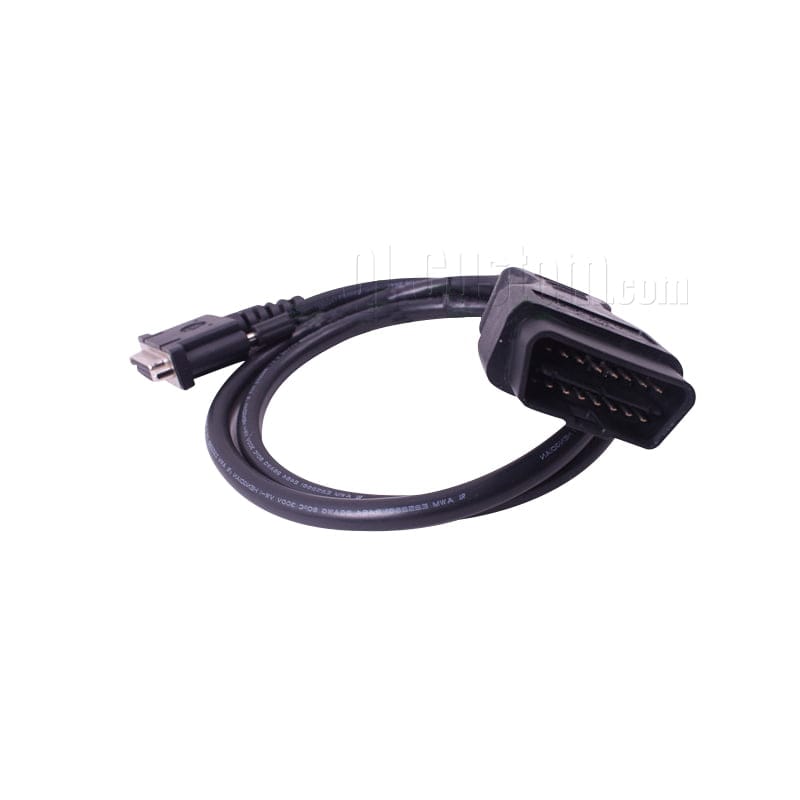
A car dashboard shows speed, maps, music, and other data. All of this needs various wires. Flexible automotive wire harnesses keep these wires neat, safe, and in place. It bends and twists so it can fit into small spaces. It stops wires from breaking, coming loose, or making a mess. It saves time when setting up and saves space inside the dash. It makes the dashboard safer for both drivers and repair workers. It makes fixing easy and fast if there is a problem. It keeps all parts working smoothly and steadily. It also keeps the dash neat, clear, and easy to read for drivers. Importances of Flexible Wire Harnesses Dashboards today are not simple or plain. They are packed with touch screens, small sensors, and intelligent systems that all need strong wiring. This makes wires that can bend and twist very important. A flexible automotive wiring harness assembly lets wires fit into small, tight spaces without breaking. It keeps signals strong even when wires move or bend. These harnesses also make upgrades simple when new screens or tools are added. That means a car can grow with new tech without pulling apart the whole dash. Flexible wires save cost and time and provide extended, safe use. Role of Automotive Wiring Harness Connectors Connectors of the automotive wire harnesses are the small parts that link one wire to another. A strong set of automotive wiring harness connectors keeps power safe and signals steady. Good connectors block sparks, stop data loss, and help all parts talk with no trouble. They also make plug-and-play jobs fast and simple. This allows shops and drivers to do upgrades or repairs without stress. With connectors, there is no need to cut or rebuild wires. Just plug in, click tight, and it works. This lowers risk,...
Read More »High-Voltage Custom Wire Harnesses for Electric Vehicles
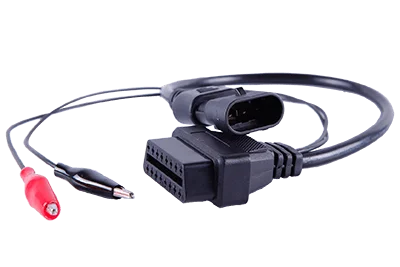
EVs use electricity to run the whole system smoothly. They need custom wire harnesses to supply the power and signals. These harnesses are made to carry high voltages without offering any errors. They keep the EVs system safe and make it easy to flow the signals smoothly. These are especially customized to fit in the vehicle and last for a long time. These cables are essential for keeping the smart system always smooth. EVs Need Specialized Wire Harnesses EVs use very high power that standard wires cannot handle. Normal wires may burn or break under heavy load, making cars unsafe. That is why custom automotive wire harness manufacturers make wires that fit the car's size, weight, and power needs in detail. This innovative design keeps the vehicle safe and helps it use less energy more smartly. It also makes the battery last longer, which saves drivers money. EVs need wires that can work day after day for many years, and only custom cable harnesses can do this job safely and surely. Benefits of Choosing Custom Harnesses Safer power flow in the car at all times Longer use and a longer life span Saves space for a clean and bright design Easy fit in many car models and types Less heat in the system and wires Lower chance of breaks or shorts Helps all car parts work faster and better These points show why wire harness customized parts are the best choice for EVs. They give cars more power, more safety, more trust, and less repair cost in the long run. They also help drivers feel safe while driving. Custom XLR cable: for EV Use Custom XLR cables are built strong and steady for extended use. They can carry sound, power, and data with no loss. In EVs, they give...
Read More »Smart Custom Wire Harness for IoT and Data Transfer Systems
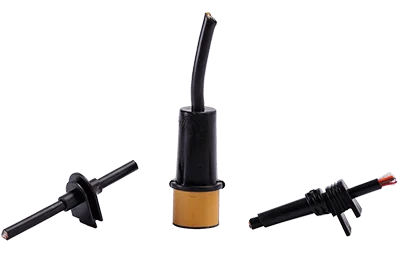
A lot and data systems need clear signals that move fast. A smart custom wire harness helps this work in the best way. It keeps data flowing quick and clean. It blocks noise, delay, or signal loss. It keeps data lines safe from breaks. It helps IoT devices link and work smoothly. It keeps smart homes safe and linked to all parts. It helps smart cars stay connected and ready to use. It keeps data neat, secure, and easy to handle. It makes sure data moves clearly and safely all the time without stopping. Power of Smart Custom Wire Harness Custom cable and wire harnesses are crucial for IoT and smart devices. They help data move in a safe, smooth, and fast way. A strong harness keeps the link firm and steady. It allows every device to work well all the time with no breaks. With an intelligent custom wire harness design, the system stays clean, safe, and simple to use, fix, or change. Each harness is made to fit the job, so no wire is wasted and all parts look neat. QL-Custom Technology Ltd. is a trusted custom wire harness manufacturer that produces innovative, safe, and strong harnesses for homes, cars, and work devices. Why Choose Custom Wiring for IoT IoT devices need fast and safe data links to share info right away. A custom electrical wire harness makes this task easy and straightforward. Each wire is placed best for the system with a custom wiring harness assembly. This saves space, lowers risk, cuts heat, and keeps all parts safe. A neat harness also makes upgrades and fixes easy to do later. Wires can be marked and set, so small changes are quick and straightforward. This makes IoT tools safer and easier for all users. Role of Data Transfer...
Read More »Automotive Wire Harnesses for Multi-Port Diagnostics
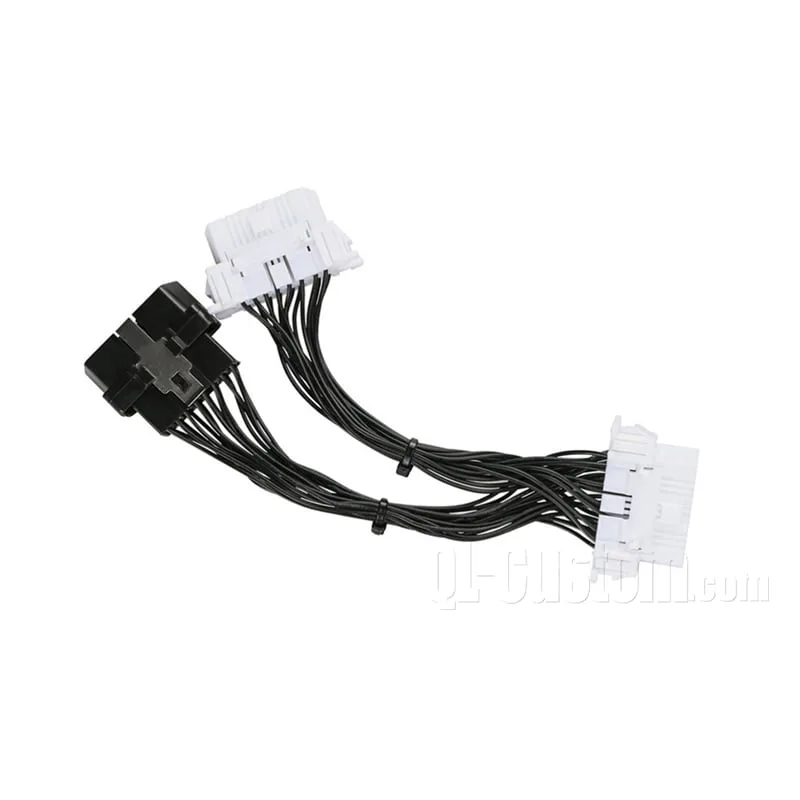
We build OBD to RJ45 automotive wire harnesses for car makers and OEMs for fast data flow and safe links in all tests. It moves data quickly and safely with no drop or delay, so tests run smoothly and clearly. Each harness fits OEM needs with neat ends, a tight grip, smooth link, and a clean wrap for testing and work on all car types. We test each line for a clear signal, firm hold, and long life so it stays strong for years. Our team keeps each build in shape for fast install and safe use in labs, shops, or on roads. This gives car makers a ready part that saves time, cuts risk, and keeps high quality for each car and each test. An OBD Y Splitter Cable & Its Importances An OBD Y Splitter cable is a small tool, but does a large job. It lets two devices plug into the OBD-II port of a car at the same time without any trouble. This is very helpful when you want to do more than one test or check on your vehicle. With this splitter, you can save time, do tests faster, and you don't have to unplug one tool just to use another. This makes it easy for car owners, repair shops, and mechanics. It also helps the complete automotive wire harness last longer because the port is not stressed too much. This cable is a brilliant choice if you want your car work to be easy and smooth. Use an OBD Y Splitter Cable in Cars Cars today are full of sensors, wires, and computers. To read them, you use the OBD-II port. But what if you want to use two devices at the same time? The splitter makes this easy. You can use GPS trackers,...
Read More »OBD to Network RJ45 Automotive Wire Harnesses for OEM Projects
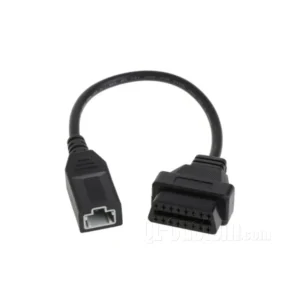
We build OBD to RJ45 automotive wire harnesses for car makers and OEMs for fast data flow and safe links in all tests. It moves data quickly and safely with no drop or delay, so tests run smoothly and clearly. Each harness fits OEM needs with neat ends, a tight grip, smooth link, and a clean wrap for testing and work on all car types. We test each line for a clear signal, firm hold, and long life so it stays strong for years. Our team keeps each build in shape for fast install and safe use in labs, shops, or on roads. This gives car makers a ready part that saves time, cuts risk, and keeps high quality for each car and each test. Smart Links Between OBD and Network RJ45 In today's cars, automotive wire harnesses do much more than move power. They also move data that helps cars run smoothly and get checked fast. One of the most valuable tools in car jobs is the OBD to Network RJ45 harness. This tool is like a bridge connecting the car's OBD port to a network port. With this harness, data moves fast, clear, and safely with no errors. It is simple to use, safe for daily work, and saves lots of time for car makers, service shops, and tech teams. Any wire harness kit can be more innovative and more ready with this type of link. It also makes old cars easy to test, fix, and connect with new gear. Best OBD To Network RJ45 Types OBDII female connector to RJ45 overmolded jack QLC16114 This RJ45 overmolded jack harness is built strong, safe, and easy to use. The OBDII female side can fit with many car types, both new and old models. The RJ45 jack is overmolded, so...
Read More »